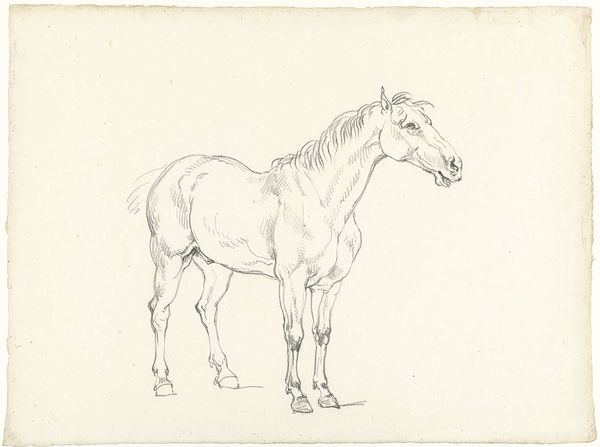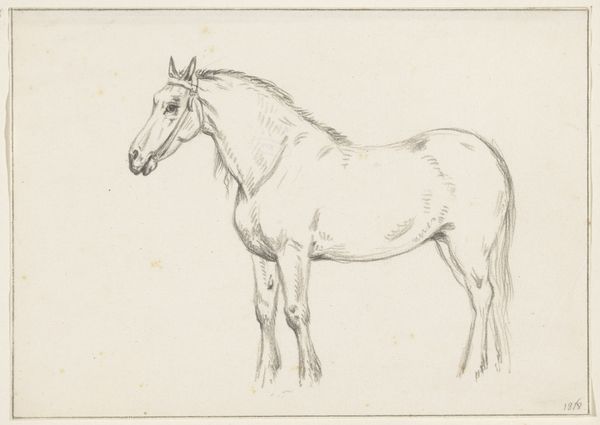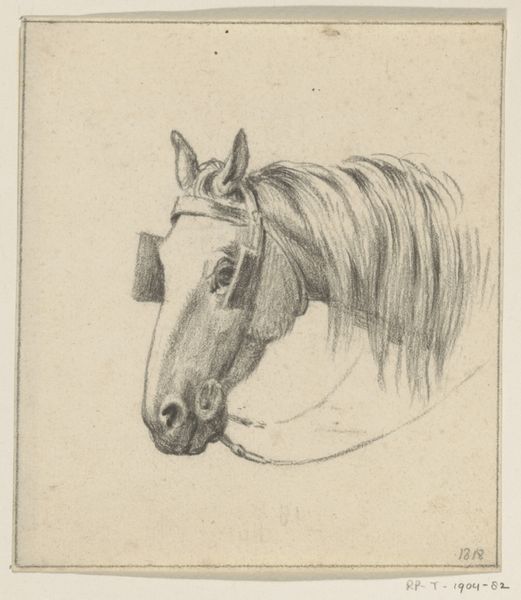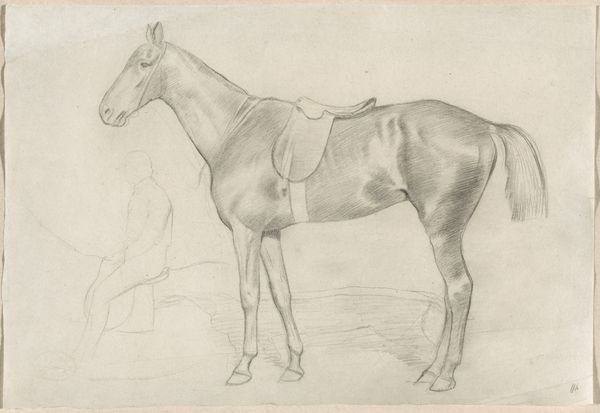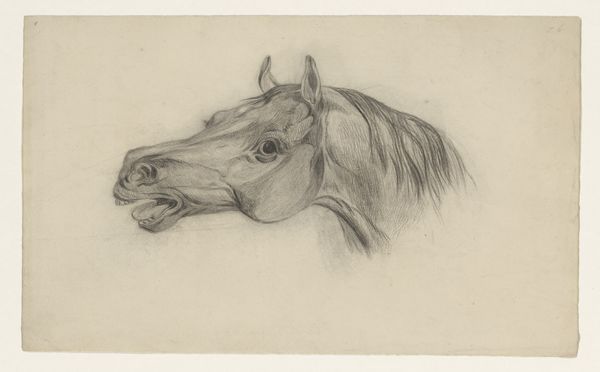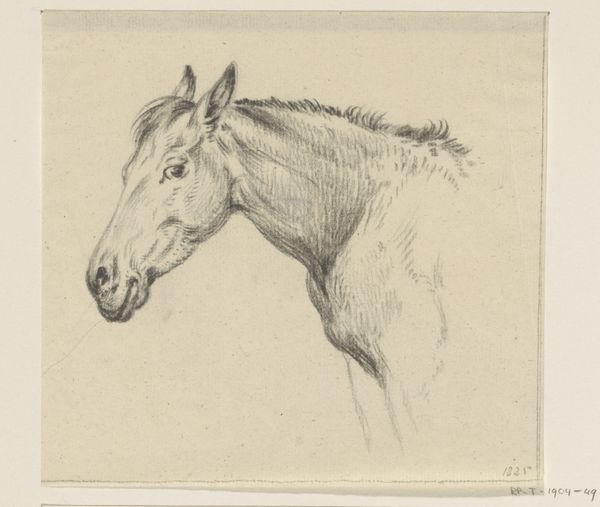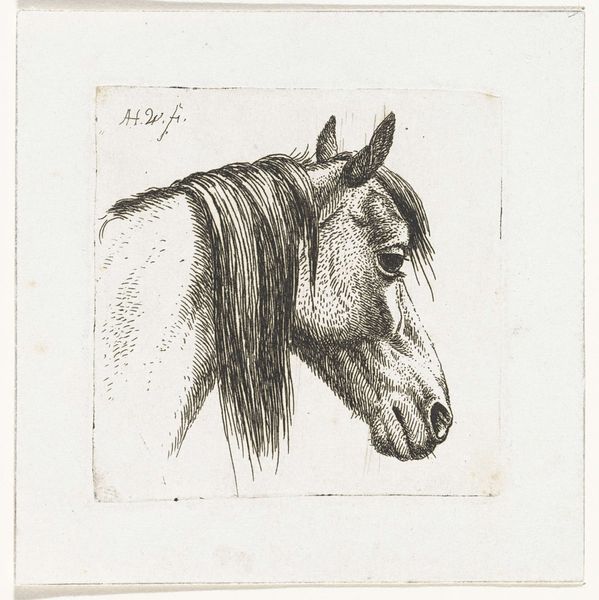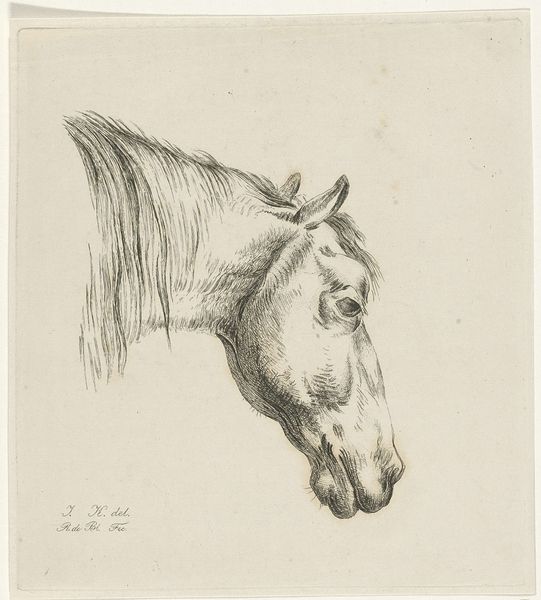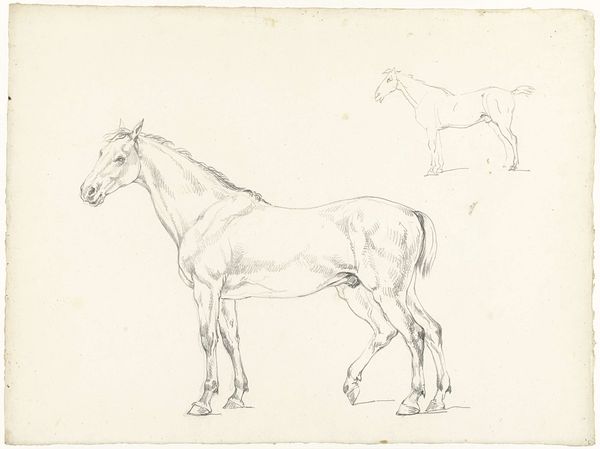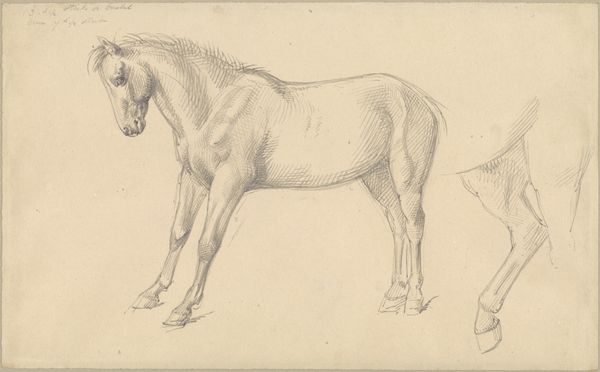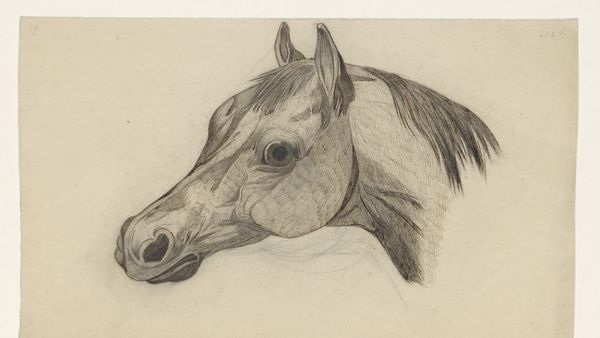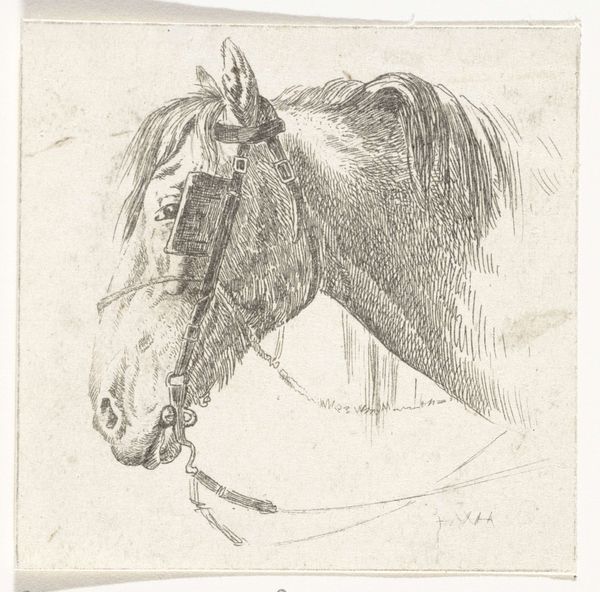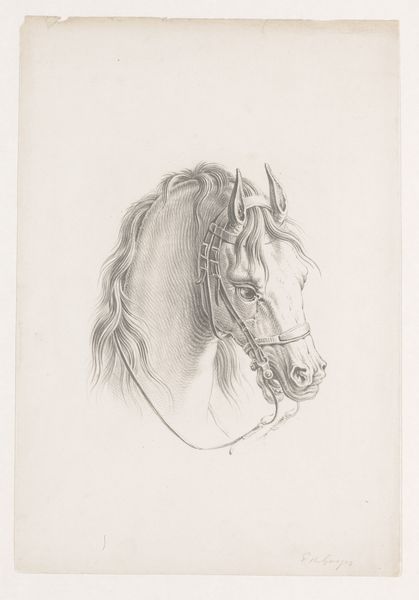
drawing, pencil, graphite
#
portrait
#
drawing
#
animal
#
landscape
#
figuration
#
pencil drawing
#
pencil
#
horse
#
graphite
Dimensions: height 136 mm, width 200 mm
Copyright: Rijks Museum: Open Domain
Editor: This drawing, "Bokkend paard," or "Bucking Horse," attributed to Leo Gestel and made sometime between 1891 and 1941, is done in pencil or graphite. It's interesting because, though clearly a representation, it feels more like a study of form and motion. What stands out to you? Curator: Well, immediately, I see the labor involved. It’s a drawing, seemingly simple, but the materiality tells a different story. Think about the paper—the pulp, the milling process. Pencil lead—the mining, the shaping. These aren't just passive materials. They’re products of specific processes, and these processes embed social relations within the art object itself. How does Gestel’s depiction of the animal itself factor into that relationship? Editor: That's a great point. The subject matter seems to reflect a certain power dynamic, with the animal perhaps representing a resource or tool within that social context. Are you suggesting we look at how the horse’s use as labor connects to the making of the artwork itself? Curator: Exactly. Gestel isn't just representing a horse; he's engaging with a network of material and social practices. What kind of work might Gestel have intended the drawing for? Was it a preliminary sketch for a larger painting, intended to depict farm work? Perhaps he sold drawings as a side hustle? Editor: Interesting question! So, by understanding the means of production and potential consumption of this piece, we understand more of its historical value and the economic position of the artist himself? Curator: Precisely. By shifting our focus from pure aesthetic value to the social and economic context, we challenge these preconceived ideas about high and low art and gain a better understanding of Gestel’s work. Editor: Thanks for broadening my view on that! I guess I typically look at things from a strictly art historical perspective, so it’s insightful to consider the materiality and its place in history as well. Curator: It’s an important element. Approaching the creation of the work through these materialist lenses reveals additional perspectives that wouldn’t be self-evident otherwise.
Comments
No comments
Be the first to comment and join the conversation on the ultimate creative platform.
